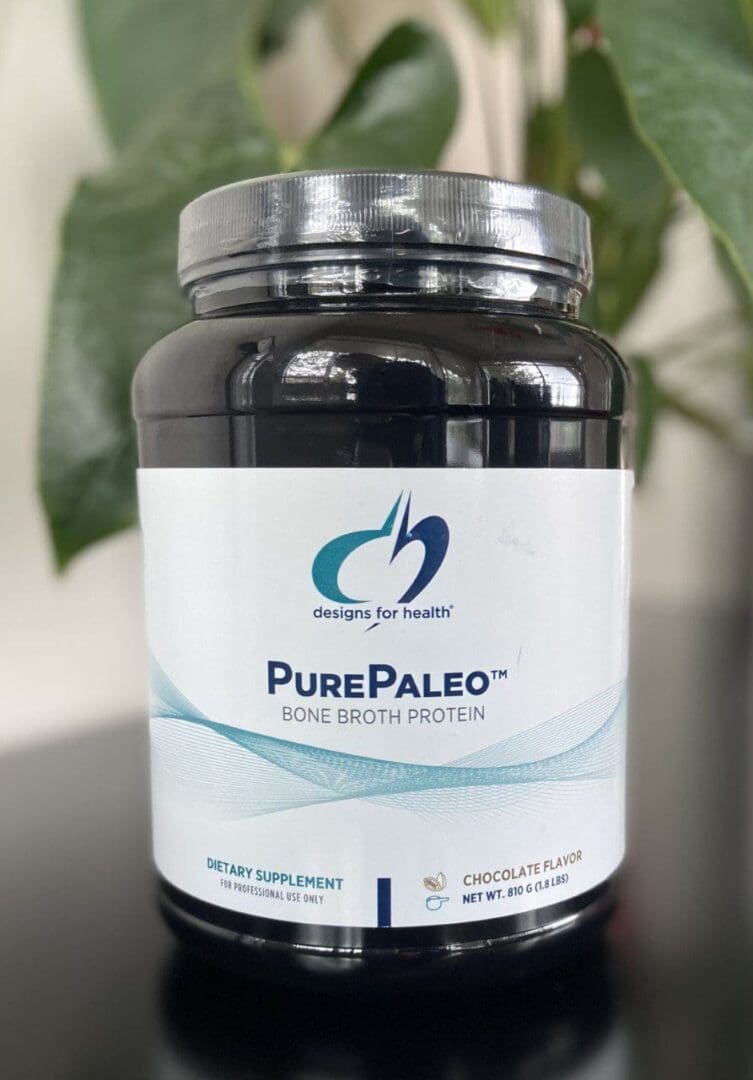One thing that’s always important to me as a nutritionist, in addition to providing education about how food impacts health, is that I want my recommendations to feel accessible. That means figuring out how to overcome barriers to taking action.
I often find myself recommending that my clients increase protein, particularly at breakfast. Frequently, people respond by saying either a) they just don’t have time for a big breakfast, or b) they don’t have an appetite for 3 eggs-worth of protein. Having a higher protein breakfast is particularly important if you find yourself with a mid-afternoon slump in energy and/or carb cravings go through the roof about 3 pm. This is often an indication of dysregulated cortisol (our stress hormone) and getting adequate protein at breakfast helps stabilize blood sugars which helps prevent that “crash”.
If you find yourself without a lot of time or appetite first thing in the morning, I often recommend smoothies as a way to fuel up for the day. Liquid meals are easier to digest when appetite is low, and smoothies do NOT need to include a lot of clean up to make them happen.
A key component of a well-balanced smoothie is protein. Protein powders can be a very helpful supplement to the diet. I recommend opting for a protein powder and making it into a smoothie rather than relying on premade shakes (when possible) because you will always add fewer ingredients than even the best intentioned product (of course there are exceptions when specialty nutrition needs are required, then premade shakes that include or exclude specific nutrients can be an essential part of a health-promoting diet).
Protein Powder Options:
Whey protein – When tolerated by the immune system (meaning, no allergic or immune-sensitivities exist), whey protein can be a powerhouse addition to your diet. It is high in several important amino acids that help optimize health. The first is cysteine. You might have heard of cysteine as “N-Acetyl-Cysteine”, or NAC. It is used to make a powerful antioxidant called glutathione. Another important amino acid in whey is glutamine, which is critical for the health of the digestive system/ gut integrity. If you opt for whey protein, look for a grass-fed product to minimize inflammatory residues.
Bone Broth Protein Powder (such as PurePaleo by Designs for Health, which we carry in our dispensary) can be a great alternative if you’re sensitive to whey protein. It is a complete protein (as are all animal protein sources), and it also contains collagen, which helps improve the health of connective tissue (examples include skin, nail, joints, and digestive tissue).
Plant protein – Not every body can tolerate whey (for physical or ethical reasons). Thankfully, there are a plethora of plant-based protein powders available now. Soy and pea proteins are the most common and can be well tolerated by most. Some people find that pea protein can cause digestive upset, in which case, I recommend considering hemp protein as an alternative. If you do opt for soy protein, I recommend a non-GMO product to minimize inflammatory residues.
Remember: My goal here is to keep this nutritious option as easy and accessible as possible. You can have a well-balanced meal-on-the-go in less than 5 minutes, from start-to-clean-up. If you don’t already own one, consider purchasing an immersion blender (Budget options for less than $50 include Hamilton Beach 4-in-1, found on Amazon for $32, for example). Rather than having to take multiple pieces apart to wash, as with a conventional blender, an immersion blender is a very quick clean-up, simply detach the blade from the motor and clean with a soapy sponge. Immersion blenders can slice through frozen fruit, but not ice cubes.
Recipe:
In it’s most basic form, a meal needs to have a balance of protein and fiber rich foods. Some bodies need a little fat for satiety while others need a little starch for satiety.
Combine the following in a mason jar and blend until smooth:
- 1 cup unsweetened nut milk
(The nutrition of milk vs. nut milk – the difference is in the carbs. Cow’s milk is naturally higher in sugars, where unsweetened nut milk is almost no carbs). - 1 serving of protein powder (1 or 2 scoops, depending on your preferred source)
- ½ cup frozen berries
If you need a little fat for satiety – blend in ¼ – ½ avocado or 1 tsp of coconut oil
If you need a little starch for satiety – blend in ½ banana or ¼ cup of tropical fruit (they’re naturally higher in sugars than berries)
Mixing in a mason jar will allow you to put a lid on it and bring it with you on your way out the door, or at the very least, minimize the clean up of making in one container and transferring to another.

